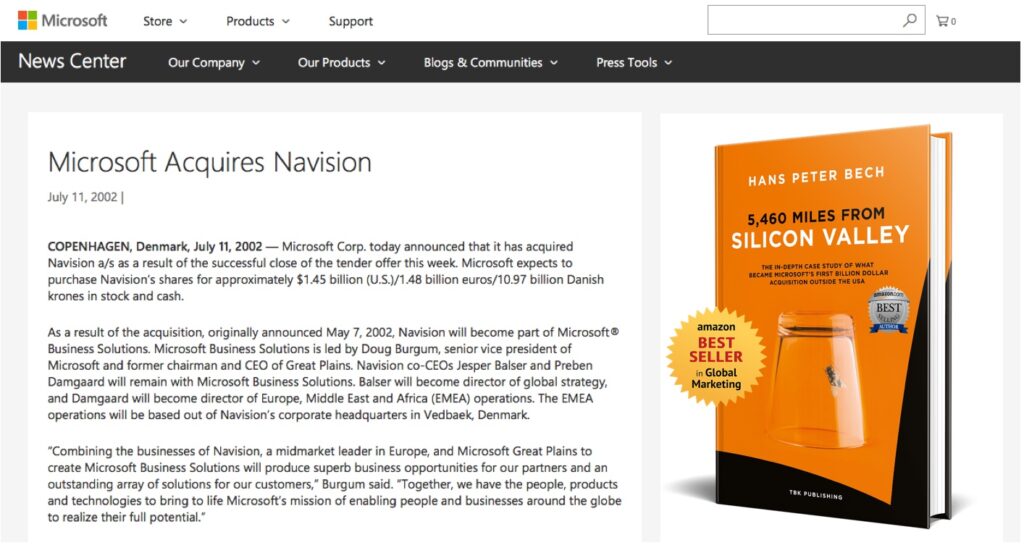
We all know those famous brilliant couples like Steve Jobs & Steve Wozniak and Bill Gates & Paul Allen. Their appealing stories have been told quite often and their companies – Apple and Microsoft – today are extremely successful and economically and socially very influential.
In the tradition of two men starting an IT company comes this book about Preben and Erik Damgaard, founders of Damgaard Data. The Damgaard brothers are less famous and their company no longer exists. As it happens, it was bought by the company of those other two guys, Microsoft. But, the main accomplishment of this book is that it tells the story of those two brothers and we as readers really get to know them. And at the same time, we learn about the history of the ancestor of Microsoft Dynamics, Axapta and Navision.
I’m reading both fiction and non-fiction books, the latter being business, scientific or WW II books. I have 3 criteria to review a business book:
1. Is it fun to read? Is it well-written?
2. Is it worth spending time on?
3. Does it bring new insights?
Let’s see how this book scores.
The book has a high level of anecdotical facts, figures and dates. In the beginning, it looks a bit too much, but after a while, I noticed that it helps to “connect” with the Damgaard brothers. It puts their story in perspective and shows how extraordinary it was. This is a story of technology, but far more one about people realizing an exceptional dream.
The book is very chronologically structured, which I like. Not only does it show the speed of change and action within Damgaard and within the IT industry, but it also makes it possible to link the story with your own (professional) timeline.
Amazing to learn was that the Damgaard brothers not only built a successful company from scratch but a whole industry as well. All seemingly without a big plan, market analysis or big consultants. They just saw a software product they wanted to improve. They asked their mother, as a “key user”, for her input and she did just fine!
What I found intriguing is that certain rules of the ERP game we all know today apparently emerged organically, without prior complicated strategic workshops. It “just happened” that we now subscribe to updates and parameterize and customize ERP software using dealers.
Finally, today we live in a fast-changing world, where companies and business models get disrupted fiercely. I learned from this book that back in the nineties circumstances weren’t stable either, on the contrary. The IT industry at that time was evolving from hardware-driven to software-driven, giving rise to difficult strategic choices companies had to make. Sounds quite familiar!
Summarizing:
1. The book reads easily and gets you along quite well. Hard to remember all the details, though.
2. If you are interested in the history of the ERP industry and want to get to know two less famous brothers, the book is worth your time.
3. I learned that, in hindsight, an evolution over time looks logical, but the insight is that when you are writing history, there is no plan available. Sometimes you win, sometimes you lose, but perseverance can take you to the top.
Overall, an impressive book and an impressive story.
